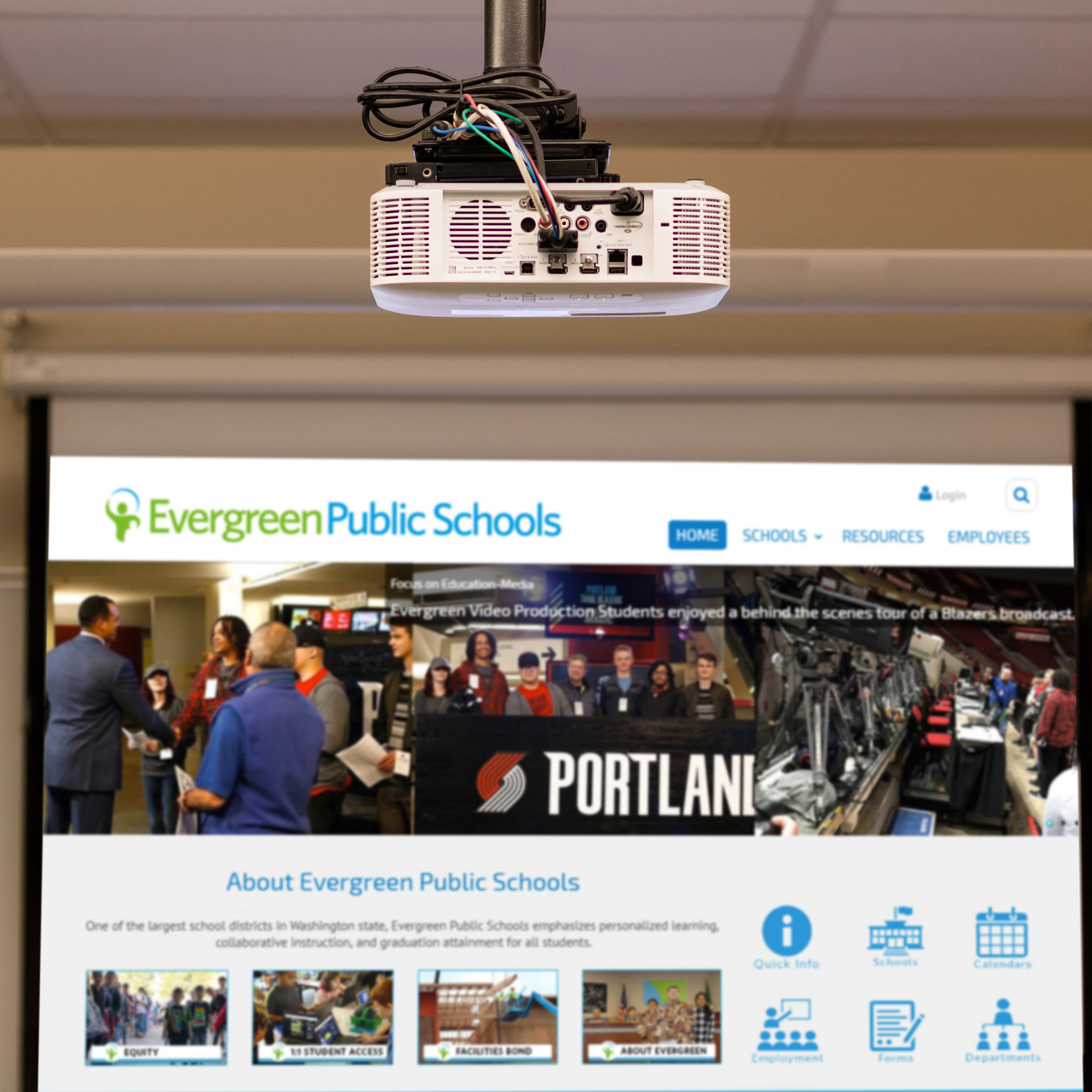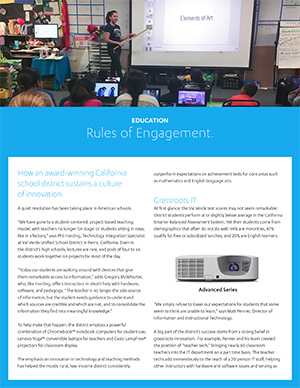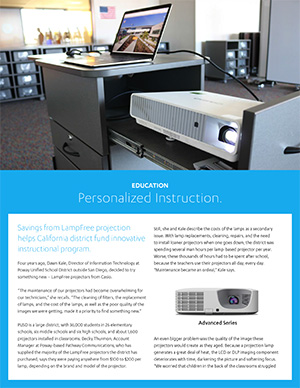Front of the Classroom Solutions to Keep Students Engaged

This article was sponsored by Casio Corporation.
So now that each student has their own device at their desk we don’t have to worry as much about the teachers display at the front of the room, right? Wrong. Teachers still need to display text, graphics and/or full-motion video in their lesson plans at the front of the classroom to increase the student's chance of grasping and learning the course material.
One solution is to install flat panel displays and take advantage of the improved graphics provided by the new high resolution models. But although the graphics are indeed awesome, many school lesson plans consist mostly of text, and even with the larger flat panels (50” – 70”), text can be difficult to read from the back of the room, therefore this solution only works well in small classrooms. Larger flat panels are available up to 110”, but these are much more expensive and with any flat panel display your maintenance costs increase as you need two people for installation and for repairs when needed.
The most popular solution for delivering course content to the front of the classroom is still a large screen and a projector. Projectors and screens are affordable, they give you the needed large display area so you can show text that is large enough for everyone to see, and projector technology has improved over the years. Whether you choose a DLP projector or an LCD projector, the dramatic enhancements in color purity achieved over the last few years have significantly improved the color reproduction and the projected images look brighter than ever.
Unfortunately traditional lamp based projectors are a maintenance nightmare. The biggest projector complaints heard from schools are about the lamps. Lamp brightness decays over time and the displays get dim and hard to see, they also take a long time to warm up and then they run hot, and of course there are the high costs for replacing the lamps.
Newer projector technologies may be a better solution. With the introduction of solid state projectors (using Lasers and LEDs instead of lamps) pictures are crisper, images are clearer, they maintain brightness for much longer, and they are easier to maintain. By using a solid-state light source instead of a lamp in the projector most of the complaints that schools have about projectors are eliminated. Having a LampFree projector means no lamps to replace, no filters to replace, less down time, and lower maintenance costs. Also since there are no Mercury lamps, concerns for the proper disposal of used Mercury lamps and Mercury pollution are eliminated.
Yes, the initial purchase prices of LampFree projectors do tend to be more expensive than the prices of comparable lamp based projectors, but when purchasing projectors you cannot only look at the initial purchase price but need to look at the total cost of ownership (TCO). TCO includes all the costs that you will actually pay over the life of your projector. TCO not only includes the purchase cost, but also the cost of using your projector, such as energy, repair and maintenance costs. When you add up the original purchase price, the cost of replacement lamps, replacement filters, labor costs, and higher energy usage, LampFree projectors cost much less over the 20,000 hour life of your projector.
Tools and ideas to transform education. Sign up below.
Reliability is also an important factor and while lamps on traditional lamp projectors lose brightness between 1,000 and 3,000 hours, many LampFree projectors have an impressive lifespan of up to 20,000 hours. That means a LampFree projector in your classroom could last over 15 years, based on six hours of use a day during a 180-day school year without ever having to replace a lamp or a filter. For a school with projectors in every classroom, that’s a significant savings.
So the best (and the most cost effective) solution for your front of the classroom display may be a LampFree projector projecting a large image onto your wall or your large screen. The LampFree projectors are easy to use, affordable, and produce large, bright, high quality images to help keep your students engaged.
Case Study: Rules of Engagement

How an award-winning California school district sustains a culture of innovation.
A quiet revolution has been taking place in American schools. “We have gone to a student-centered, project-based teaching model, with teachers no longer ‘on stage’ or students sitting in rows, like in a factory,” says Phil Harding, Technology Integration Specialist at Val Verde Unified School District in Perris, California
Case Study: Don't Leave Them Flat

Washington State public school district buys innovative classroom displays from Casio.
From a technology department’s perspective, flat panel displays seem perfect for a classroom. They’re bright, crisp, and they last for years with little or no maintenance. Yet looks can be deceiving.
Case Study: Personalized Instruction

Savings from LampFree projection helps California district fund innovative instructional program.
Four years ago, Dawn Kale, Director of Information Technology at Poway Unified School District outside San Diego, decided to try something new – LampFree projectors from Casio. “The maintenance of our projectors had become overwhelming for our technicians,” she recalls. “The cleaning of filters, the replacement of lamps, and the cost of the lamps, as well as the poor quality of the images we were getting, made it a priority to find something new.”
